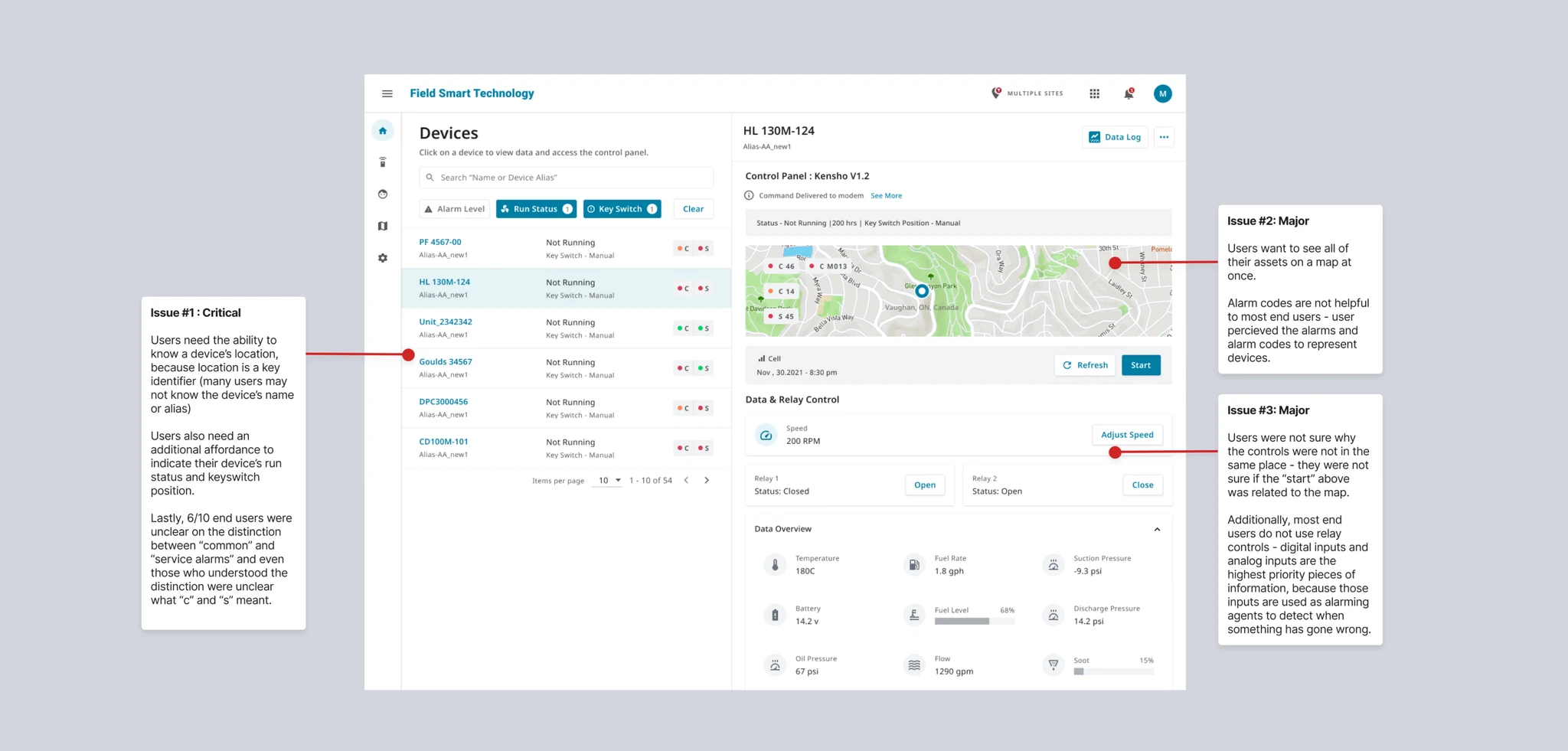Role
Product Designer
Year
2022
Type
Responsive Web
Unsafe or inaccessible flood sites require effective software for off-site monitoring. The existing Field Smart Technology (FST) interface was cumbersome, slowing operations and leading to low adoption—customers bought or rented pumps but avoided using the software due to poor usability.
User interviews revealed struggles with data overload, lack of a clear information hierarchy, and repeated searches for the same device across multiple pages.
Initial heuristic analysis of FST 1.0, and a quote from a user interview
In this project, I aimed to simplify setting up alerts, and create a clear information hierarchy prioritizing urgent data. My goal was to position FST as a model of user-centered design within Xylem while setting a standard for component, color, and style usage.
The Process
I began by reviewing prior research, including user personas for Operational Managers, Technicians, and Xylem Sales Representatives, to understand how the FST experienced differed based on role.
I then conducted a heuristic analysis of the existing interface, mapping pain points to areas of friction, complexity, and inefficiency.
Throughout the process, I conducted three rounds of user research to validate decisions and refine prototypes, balancing clarity with engineering constraints to ensure seamless integration with pump hardware.
Usability issues uncovered during the first round of prototype tests
Usability issues solved after iteration
The Solution
The end design prioritized critical pump information—status, alerts, and controls—on a single, high-visibility screen.
I often provided the dev team with async walkthroughs to document interactions and ensure responsiveness (crucial for users monitoring pumps in the field)



